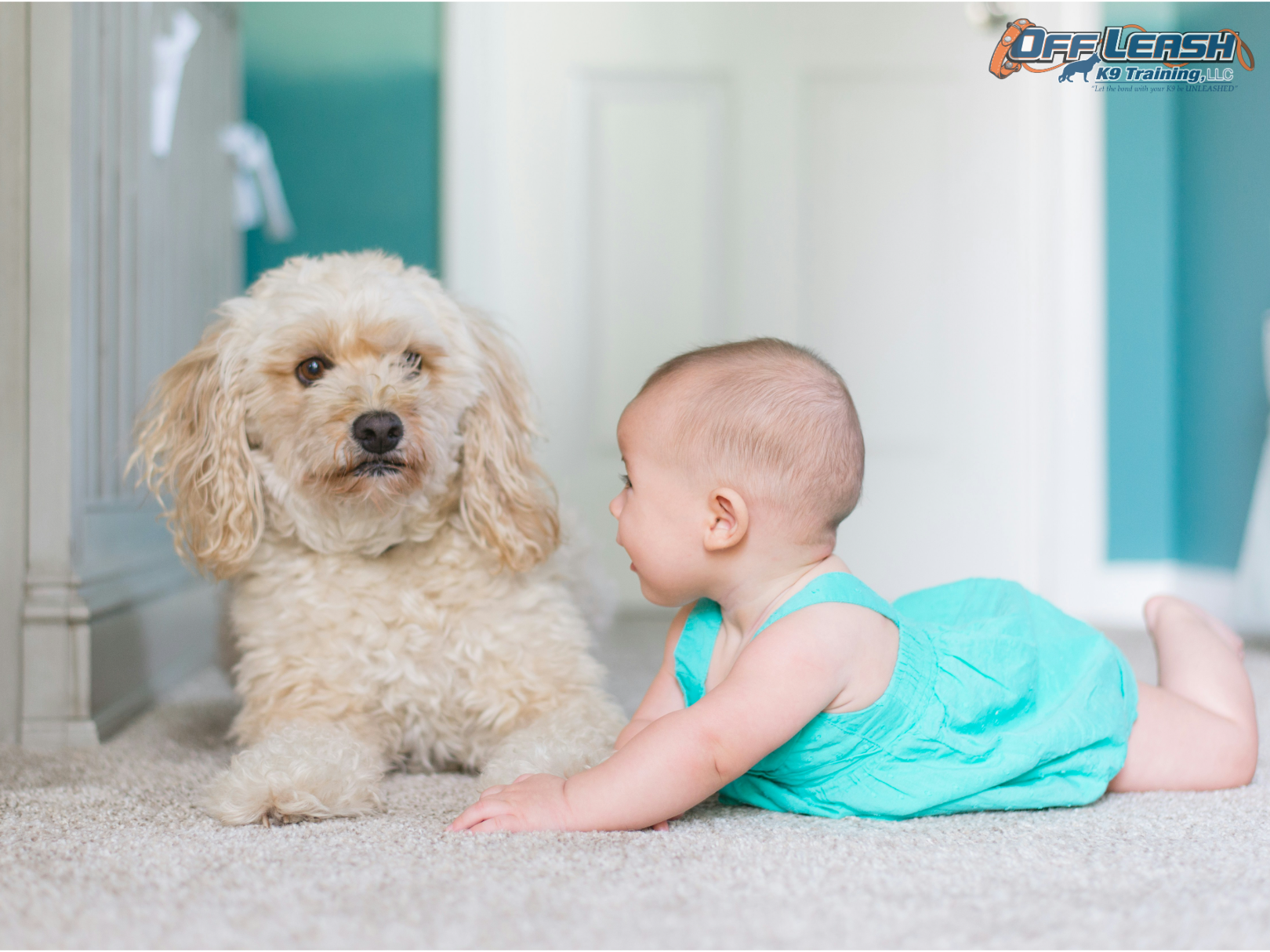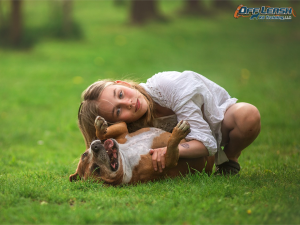A comprehensive guide for parents on teaching children to safely interact with dogs, emphasizing the importance of understanding dog body language, approaching dogs correctly, teaching respect and boundaries, providing safe interaction and playing tips, and the necessity of supervision and intervention.
Introduction: Importance of Teaching Children Dog Safety
Educating children on the essentials of dog safety is more than a precaution—it’s a foundational step in nurturing a culture of respect and understanding between young individuals and animals. As guardians and educators, parents hold the pivotal role of imparting knowledge and setting examples on how to interact with dogs in a manner that is both safe and considerate. This journey of learning not only equips children with the necessary skills to engage with dogs confidently but also instills in them an appreciation for the nuances of animal behavior and the importance of respecting living beings. By prioritizing dog safety from an early age, we lay the groundwork for preventing misunderstandings and potentially dangerous situations, thereby safeguarding the wellbeing of both children and dogs.
The benefits of teaching children about dog safety extend far beyond avoiding negative encounters. It fosters a harmonious relationship that can enhance the emotional and social development of children, teaching them valuable lessons in empathy, responsibility, and mutual respect. Moreover, understanding how to interact safely with dogs can significantly decrease the likelihood of dog-related incidents, contributing to a safer and more positive community environment for both humans and animals. Cultivating these respectful habits early on ensures that children grow up to be compassionate pet owners and community members, promoting an enduring culture of safety and kindness towards animals.
 Understanding Dog Body Language
Understanding Dog Body Language
Teaching children to discern the nuances of dog body language is a cornerstone of fostering safe interactions between young ones and our canine companions. A dog that is at ease often exhibits a relaxed posture, with a softly wagging tail and a body that’s loose, not stiff. This signals that the dog is open to interaction and likely to respond positively to gentle approaches. Conversely, signs of stress or discomfort in dogs can manifest as growling, a tensed body, flattened ears, or even avoidance of eye contact. These are clear indicators that the dog is not in a state to be approached safely, signaling to children that they need to respect the dog’s current need for space.
Understanding these signals is not just about preventing immediate harm; it’s about nurturing a deeper respect and empathy for animals in children. When a child learns to recognize and respond to a dog’s body language, they’re equipped to make more compassionate decisions in their interactions. For instance, if a child approaches a dog and notices it turning its head away or tucking its tail, they should understand this as a sign to stop their approach and give the dog some distance. This level of awareness can drastically reduce the likelihood of misunderstandings that could lead to fear or aggression from the dog. Moreover, such insights into animal behavior are invaluable lessons in empathy and respect for all living beings, setting a foundation for responsible pet ownership and interactions throughout their lives. Parents play a crucial role in guiding their children through these lessons, underscoring the importance of direct supervision and ongoing dialogue about how to interact with dogs respectfully and safely.
The Right Way to Approach a Dog
Educating children on the proper manner to approach a dog is pivotal in fostering a safe and positive interaction between them. The initial step involves teaching the child to calmly stand still, inviting the dog to sniff and become acquainted with their scent. This non-threatening gesture is crucial for building trust and signaling to the dog that the child means no harm. It’s essential to underscore the importance of patience during this process, allowing the dog to make the first move towards further interaction. This approach not only safeguards the child but also respects the dog’s comfort zone, laying the foundation for a respectful relationship.
Moreover, emphasizing the significance of observing a dog’s reaction before proceeding is vital. If the dog appears relaxed, with a wagging tail and a loose posture, it’s generally a sign that the dog is comfortable with being petted. However, if the dog backs away or exhibits signs of discomfort, it’s important for the child to understand that they should not pursue further interaction. This teaches children to respect a dog’s boundaries and to recognize that not all dogs may be in the mood for interaction at all times. By instilling these principles, we encourage a harmonious and safe engagement, ensuring a positive experience for both the child and the dog.
Teaching Respect and Boundaries
Teaching children to treat dogs with respect and to understand their boundaries is a critical component of fostering safe and positive interactions. It’s imperative that parents guide their children on how to engage gently with dogs, underscoring the importance of kindness and patience in every interaction. For instance, children should be taught that dogs, much like people, have personal space needs and may not always welcome hugs or face-to-face contact. This education should include clear instructions on avoiding sudden movements or loud noises that could startle or stress the dog, as these can inadvertently provoke an aggressive response. By instilling these values early on, children learn to approach dogs with the care and respect they deserve, contributing to a harmonious coexistence.
Moreover, reinforcing these respectful behaviors through consistent practice and supervision is essential. Parents can demonstrate how to properly interact with dogs by showing how to approach a dog calmly, allowing the dog to sniff them before petting, and focusing gentle strokes on the chest or upper half of the back, avoiding sensitive areas like the feet, legs, tail, or head. It’s also crucial to teach children to recognize and respect a dog’s signals of wanting to be left alone, such as walking away or showing disinterest. By understanding and adhering to these guidelines, children can significantly reduce the risk of stressful or dangerous situations, paving the way for a lifetime of positive and enjoyable interactions with dogs. Encouraging this level of respect and boundary awareness not only protects the child and the dog but also strengthens the bond between them, making every interaction a source of joy and mutual respect.
Safe Interaction and Playing Tips
Interacting with dogs through petting and play is not only a source of joy but also an opportunity for children to learn empathy and responsibility. When teaching children how to pet dogs, it is important to emphasize the use of gentle strokes on the chest or upper back, steering clear of sensitive areas like the feet, legs, tail, or head. This approach minimizes the risk of making the dog feel threatened or uncomfortable, fostering a positive interaction from the start. Demonstrating with a soft touch and guiding the child’s hand can serve as a practical example of how to show kindness and respect towards their furry friends.
Moreover, playtime with dogs should be more than just fun; it should also reinforce the bond between the child and the dog. Engaging in interactive play using suitable toys, like soft balls or tug ropes, allows for a structured playtime that is safe and enjoyable for both parties. It’s essential to avoid encouraging rough play or games that might inadvertently teach the dog undesirable behaviors. By involving children in activities such as fetching games or teaching simple tricks, we not only enhance the relationship but also instill a sense of accomplishment and mutual respect in the child.
 Supervision and Intervention
Supervision and Intervention
Ensuring a safe environment for both children and dogs during their interactions requires constant vigilance and supervision from parents or guardians. It’s not just about watching from a distance; it involves actively observing the dynamics between the child and the dog, being ready to step in at the first sign of discomfort or potential danger. Recognizing the subtle cues that a dog might be stressed or feeling threatened—such as avoiding eye contact, licking lips, or tucking its tail—can be the key to preventing negative outcomes. These warning signs are crucial indicators that it’s time for an adult to intervene, possibly by calmly separating the child and the dog, and assessing the situation to prevent any escalation.
Moreover, implementing preventive measures can significantly contribute to creating a safe interaction space. Utilizing management tools like baby gates or crates not only helps in controlling the dog’s movement but also in teaching children about respecting the dog’s need for personal space. These tools can be especially helpful during high-energy moments or when the child and dog are still getting used to each other’s presence. Additionally, educating children on the importance of gentle interaction and guiding them on how to read a dog’s body language can empower them to recognize on their own when a dog may not be in the mood for play or cuddles, fostering a mutual respect between them.
Conclusion: Promoting Safe Dog-Child Interactions
The journey of teaching children how to interact with dogs safely is an essential chapter in the book of responsible pet ownership. Initiating this education by highlighting the importance of understanding a dog’s body language paves the way for fostering respectful and harmonious relationships between our youngest family members and their four-legged companions. Encouraging children to approach dogs with calmness and engage in gentle play not only nurtures a positive bond but also significantly diminishes the likelihood of accidents or misunderstandings. It’s imperative that as parents and guardians, we place a strong emphasis on this aspect of upbringing, integrating it as a core value in our children’s lives.
Moreover, recognizing when to seek professional guidance to reinforce these teachings can be pivotal in ensuring the well-being of both children and pets. Off Leash K9 Training of El Paso, TX specializes in crafting bespoke training programs that focus on obedience, behavior modification, and fostering a safe environment for interactions. Their expertise can be an invaluable resource in navigating the complexities of child-dog dynamics, offering strategies that cater to the unique needs of each family. By exploring the options available through professional training, we can take proactive steps towards enhancing the quality of interactions between our children and dogs, ensuring they grow together in a safe, respectful, and loving manner. For more insights and to explore how professional training can benefit your family, visit Off Leash K9 Training of El Paso, TX.


 Understanding Dog Body Language
Understanding Dog Body Language
 Supervision and Intervention
Supervision and Intervention